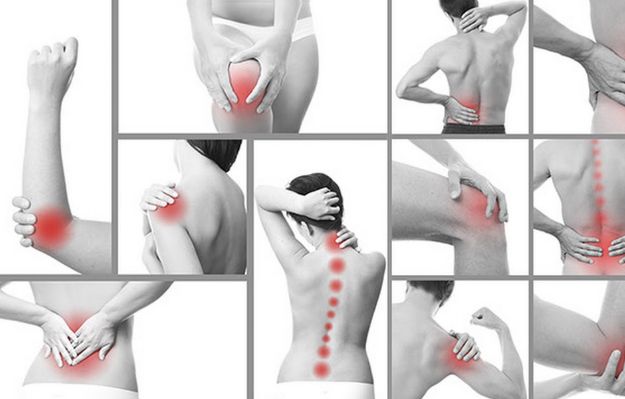
Muscular pain, known as Mamsagata Vata (Vata affecting muscles) or Mamsasula in Ayurveda, is commonly attributed to an imbalance in Vata Dosha. Vata, with its cold, dry, and mobile qualities, can lead to dryness, stiffness, spasm, and pain in the muscles. Other factors like accumulation of Ama (toxins), poor digestion, injury, overuse, stress, and inadequate nourishment can also contribute.
Ayurvedic treatment for muscular pain aims to:
- Pacify aggravated Vata Dosha.
- Reduce pain, stiffness, and muscle spasms.
- Improve blood circulation to the affected area.
- Nourish and strengthen muscle tissue (Mamsa Dhatu).
- Eliminate Ama (if present).
Here’s a detailed overview of Ayurvedic treatment approaches for muscular pain:
I. Shodhana (Panchakarma – Detoxification and Purification Therapies): These therapies are highly effective for chronic or severe muscular pain, as they help eliminate toxins and restore doshic balance. They are typically performed after a preparatory phase (Purvakarma) of internal and external oleation (Snehana) and fomentation (Swedana).
- Abhyanga (Herbal Oil Massage):
- Description: Regular gentle massage with warm medicated oils is fundamental.
- Oils Used: Mahanarayana Thailam, Kottamchukkadi Thailam, Dhanwantharam Thailam, Sahacharadi Thailam, Nirgundi Taila, Bala Ashwagandhadi Thailam, or even simple warm sesame oil (Til Taila) or Mustard Oil (Sarshapa Taila) can be used.
- Benefits: Pacifies Vata, reduces dryness and stiffness, improves blood circulation, alleviates pain and muscle spasms, and nourishes muscle tissue.
- Swedana (Fomentation/Steam Therapy):
- Description: Performed after Abhyanga, Swedana helps enhance oil absorption, relax muscles, reduce stiffness, and promote sweating for toxin elimination.
- Types Used:
- Kizhi (Pinda Sweda): Herbal poultices (bundles) made with medicated leaves (Elakizhi), herbal powders (Podi Kizhi), or Navara rice (Navarakizhi) cooked in milk and herbal decoctions. These warm poultices are applied directly to the painful muscles, providing deep heat, reducing pain, inflammation, and stiffness.
- Nadi Swedana: Localized steam applied to the affected muscle using a tube.
- Avagaha Swedana (Herbal Bath): Immersing the affected body part (or whole body) in a tub of warm medicated herbal decoctions.
- Bashpa Sweda (Steam Chamber): Full body steam in a chamber infused with herbal vapors.
- Benefits: Relieves muscle cramps and spasms, reduces stiffness, improves flexibility, and helps in detoxification.
- Upanaha (Herbal Paste/Poultice Application):
- Description: Application of warm herbal pastes or poultices to the affected muscle. The paste is often made with herbs like Nirgundi, Eranda (Castor), Rasna, or specific Ayurvedic powders mixed with hot water, oil, or vinegar.
- Benefits: Provides localized relief from pain, inflammation, and stiffness.
- Lepa (Local Application of Medicated Paste):
- Description: Similar to Upanaha, but often a thinner paste. Used for localized pain and swelling.
- Ingredients: Turmeric, ginger, garlic, rock salt, or specific Ayurvedic choornas (powders) mixed with water or oil.
- Basti (Medicated Enema):
- Description: While not directly applied to muscles, Basti is considered the best treatment for balancing Vata Dosha, which is the root cause of most muscular pains. The colon is the primary seat of Vata.
- Types: Both Sneha Basti (oil enema) and Kashaya Basti (decoction enema) may be administered.
- Benefits: Systemically pacifies Vata, nourishes the nervous system, and helps eliminate deep-seated toxins contributing to chronic muscular pain.
II. Shamana (Palliative Therapies & Herbal Medicines): These involve internal medicines to manage symptoms and strengthen the body.
- Herbal Formulations:
- Guggulu Preparations: Yogaraja Guggulu, Mahayogaraja Guggulu, Trayodashanga Guggulu, Simhanada Guggulu. These are potent anti-inflammatory and analgesic herbs that help reduce pain, stiffness, and muscle spasms.
- Ashwagandha (Withania somnifera): An excellent adaptogen, muscle relaxant, and nervine tonic. It reduces stress, strengthens muscles, and aids in pain relief.
- Shallaki (Boswellia serrata): Known for its potent anti-inflammatory properties, effective in reducing muscle and joint inflammation.
- Rasna (Pluchea lanceolata): Excellent Vata-pacifying and anti-inflammatory herb, specifically used for stiffness and body aches. Often combined with Eranda (Castor root).
- Nirgundi (Vitex negundo): Possesses analgesic and anti-inflammatory properties, useful for muscle pain and spasms. Nirgundi oil is also widely used topically.
- Shunthi (Ginger): A powerful anti-inflammatory and Ama-digesting agent, helps reduce pain and stiffness.
- Haridra (Turmeric/Curcuma longa): Contains curcumin, a strong anti-inflammatory and antioxidant.
- Eranda (Castor oil): Used internally in small doses or with decoctions for its Vata-pacifying and mild purgative properties, helping to clear channels and reduce muscle stiffness.
- Bala (Sida cordifolia): Known for strengthening muscles and nerves, often used in oils and formulations.
- Lahsuna (Garlic): Has Vata-pacifying and anti-inflammatory properties.
- Classical Kashayams/Arishtams: Rasnairandadi Kashayam, Sahacharadi Kashayam, Dashamoolarishtam, Balarishtam are decoctions or fermented liquids that help in pain management, Vata pacification, and strengthening the musculoskeletal system.
- Medicated Ghee: Ksheerabala Thailam (can be taken internally or externally), Mahanarayana Thailam, Bala Ashwagandhadi Thailam are used for nourishing muscles and nerves.